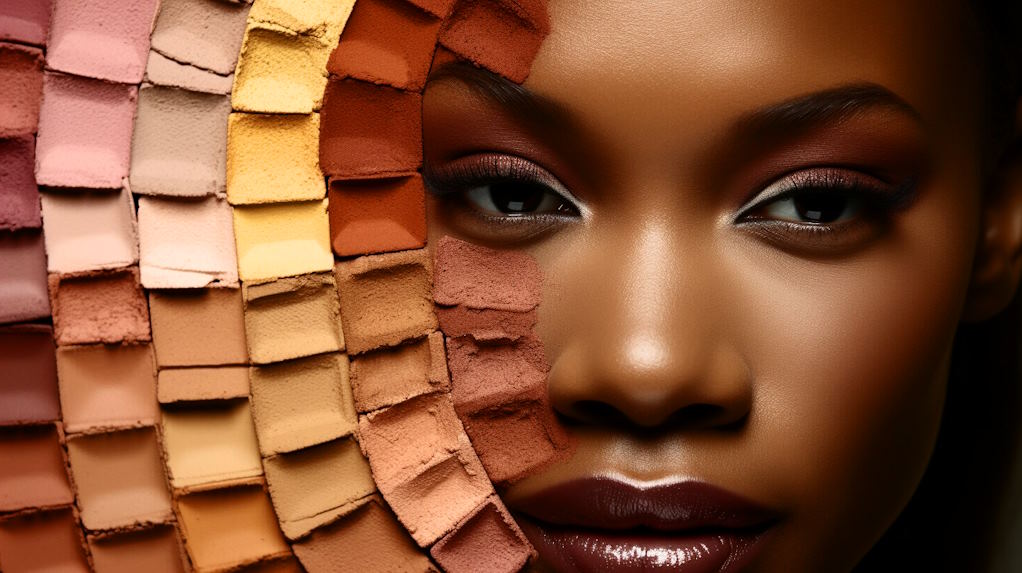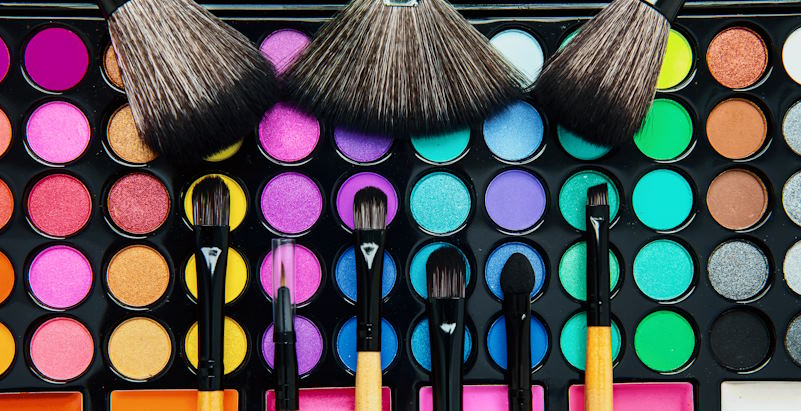The canvas of one’s face becomes an exquisite palette where colors intertwine, creating a masterpiece that reflects personal style and mood. Color theory in makeup is not merely a technical aspect; it is an art form that empowers individuals to tell their own stories through pigments and hues. As we embark on this exploration of color theory in makeup, we unravel the mysteries of the color wheel, unlocking the secrets behind complementary and analogous color schemes. Beyond the technicalities, we delve into the emotional resonance of color choices, understanding how they can influence mood, perception, and self-confidence. Whether you’re a makeup novice eager to enhance your daily routine or a seasoned artist seeking to refine your skills, join us in discovering the transformative magic of color theory, where each stroke of color becomes a brushstroke on the canvas of self-expression.
Eye Makeup and Color Harmony: Unveiling the Art of Expression
Eyes, often referred to as the windows to the soul, are the focal point of any makeup look. Harnessing the principles of color theory can transform your eye makeup into a captivating masterpiece. Begin by exploring eyeshadow color combinations that elevate your gaze to new heights.
Exploring Eyeshadow Color Combinations
- Complementary Eyeshadow Looks: Embrace the power of contrast by pairing eyeshadows that sit opposite each other on the color wheel. This dynamic duo creates a bold and striking effect, making your eyes the center of attention. Think sultry oranges with deep blues or rich purples with vibrant yellows for an eye-catching allure.
- Analogous Eyeshadow Looks: Dive into the world of harmony by selecting eyeshadows that are adjacent on the color wheel. This creates a seamless and sophisticated look, offering a subtle transition between shades. Consider blending warm peach tones with soft corals or earthy browns with muted golds for a cohesive and polished appearance.
Tips for Blending Eyeshadows Seamlessly
The key to a flawless eyeshadow application lies in the art of blending. Invest time in mastering techniques that seamlessly fuse different shades together. Utilize a gentle hand, circular motions, and quality brushes to achieve a smooth gradient, ensuring your eyeshadow transitions are as seamless as they are stunning.

Blush and Contour: Sculpting Your Canvas with Precision
Blush and contour are the unsung heroes of makeup, wielding the power to define, accentuate, and bring warmth to your facial canvas. Delving into the realm of color and contour requires finesse, and it all begins with selecting blush shades that harmonize with your unique skin tone.
Selecting Blush Shades that Complement Skin Tone
Consider your skin’s undertones when choosing blush shades. Rosy pinks work wonders for cool undertones, while peachy tones complement warm undertones. Rich mauves and berry hues are versatile, offering a timeless appeal for various skin tones. By selecting a blush shade that resonates with your undertones, you’re laying the groundwork for a natural and cohesive look.

Achieving Overall Color Harmony: Crafting a Symphony of Beauty
Color harmony in makeup is akin to orchestrating a symphony – each element plays a crucial role in creating a harmonious masterpiece. From coordinating makeup elements to balancing color intensity, achieving an overall sense of cohesion is an art form.
Coordinating Makeup Elements for a Cohesive Look
Harmonizing your makeup elements involves aligning colors across various features – eyes, lips, and cheeks. Ensure that the tones and undertones complement each other, creating a unified and polished appearance. This coordination fosters a sense of balance, allowing individual elements to shine while contributing to the overall aesthetic symphony.
Balancing Intensity and Saturation of Colors
Strike a delicate balance between bold and subtle by managing the intensity and saturation of colors. While a pop of vibrant color can be captivating, it’s essential to temper it with softer tones to avoid overwhelming the overall look. Gradation and thoughtful layering bring depth and nuance to your makeup, ensuring a harmonious blend of colors.
